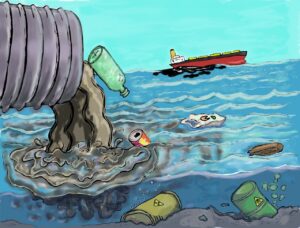Ecosystem services (ES) – such as the provision of goods, regulation and support of human, natural and cultural activities – require proper and well defined management systems, which are now a core issue among the scientific community.
The main types of ecosystem services with significant commercial scale are:
– carbon sequestration and storage
– biodiversity protection
– watershed protection
– landscape beauty.
There may also be synergies or trade-off between the different categories of services and they have to be accurately dealt by a proper scientific economic and environmental analysis.
The trade-off between ecological preservation of the natural environment and the benefits from land use may be controlled by the adoption of monetary compensation and economic instruments. One of them is the payments for ecosystem services (PES).
What is “paying for the ecosystem services”?
PES are based on a conservation approach. They are legal contracts between external ES beneficiaries and local landholders. The former pay the latter in exchange of conservation and restoration activities of the ES. This may result in the development of a new private sector funding which may be very relevant for the well-being improvements of poor communities.
The definition of PES may be simply summed up into some specific and necessary conditions: it has to be a voluntary transaction where a well-defined ES (or a land use likely to secure that service) is being bought by a (minimum one) ES buyer from a (minimum one) ES provider, if and only if the ES provider secures ES provision (conditionality).
The transaction has to be voluntary: it is a market mechanism – not a common and control instrument – and the providers are supposed to have real different land use choices. The ecosystem service has to be directly and scientifically measurable and is not linked to material or extractive benefits from nature. The conditionality of the mechanism requires some legal and enforcement apparatus, with periodic and contingent payments, monitoring and the possibility of withdrawal.
Differences and common characteristics with other economic incentives
As economic incentive instruments with strong and direct effects they are similar – but also very different – from other instruments such as environmental subsidies or land acquisition (e.g. for conservation purposes).
Subsidies aim at changes in broader production and resources use patterns, but they are not so direct as PES. Instead, land acquisition mechanisms aim to “eliminate” environmentally problematic actors; they are direct but do not include an integrated conservation-development dimension.
By contrast, PES do not require any change in land tenure (land owners remain the main actors of the deal), are cheaper and more adaptive and strongly inclusive towards the local communities.
…there may be also some problems!
By the way, some problems regarding PES still persist: they come with higher transaction costs, in terms of negotiation, monitoring…, there is the risk of violation or elimination of the deal and there may occur undesired indirect feedback loops (e.g. changes in income, consumption, labour and land markets may lead to unexpected environmental side effects).
This is only a brief introduction and definition of these mechanisms. Even if it is a kind of new instrument and its application is not so spread all over the world, there is already some literature and some relevant and interesting case studies. In the next articles, we will try to understand how they performed in the different situations and which are the necessary conditions for a good performance. We will also try to understand how the adoption of PES may be effective (or eventually not) in Italy since the new regulation about the woodland management introduced this instrument for the conservation of our forests.


